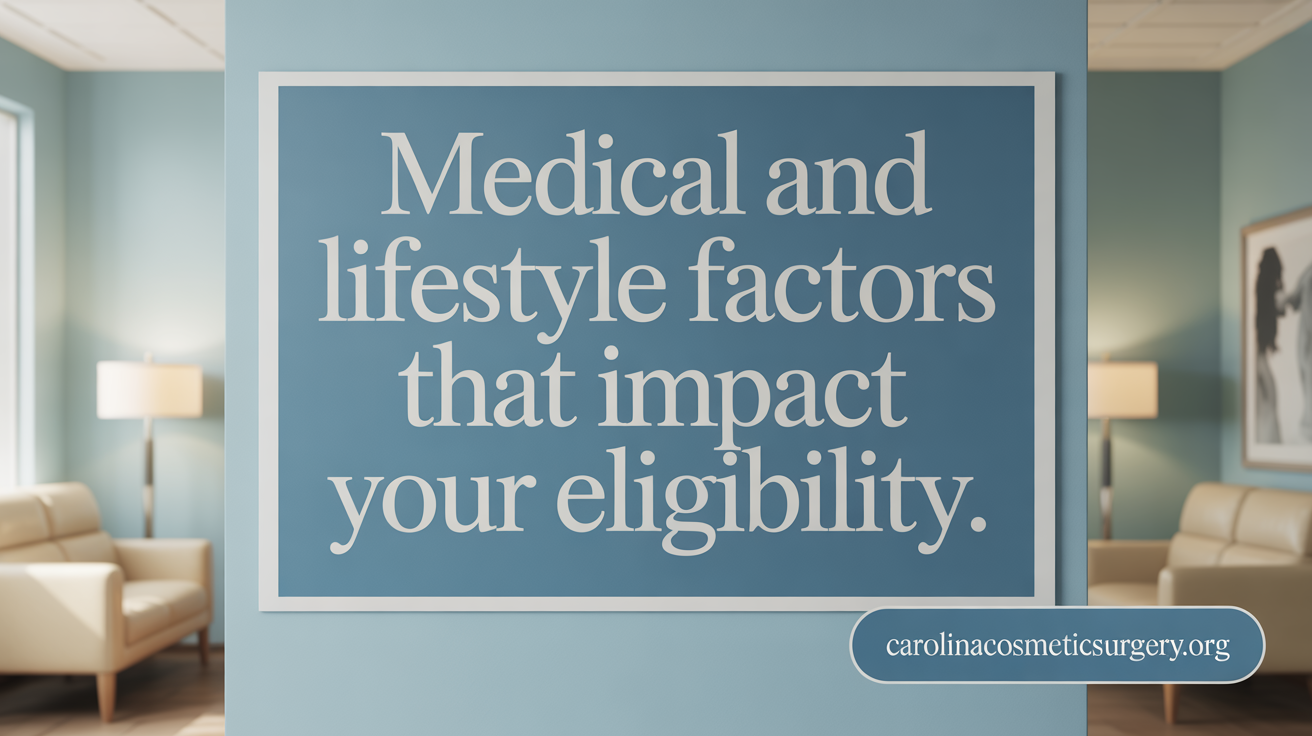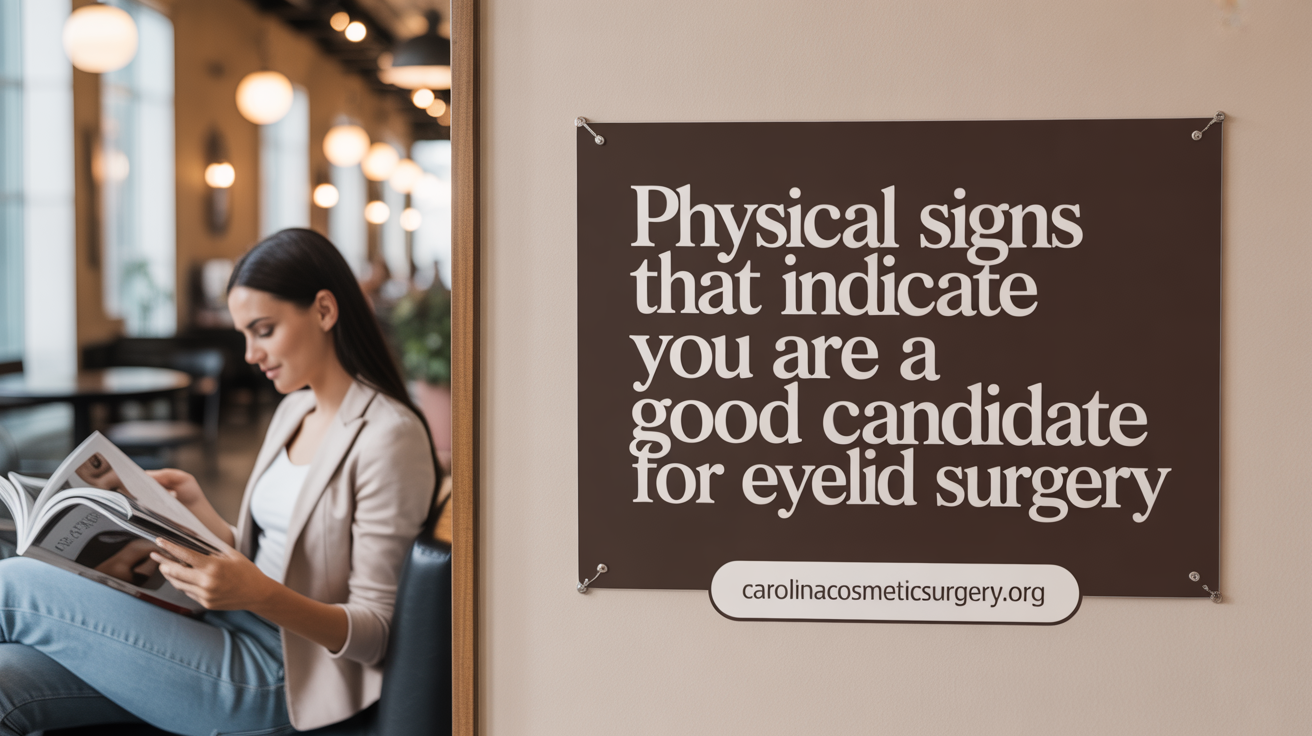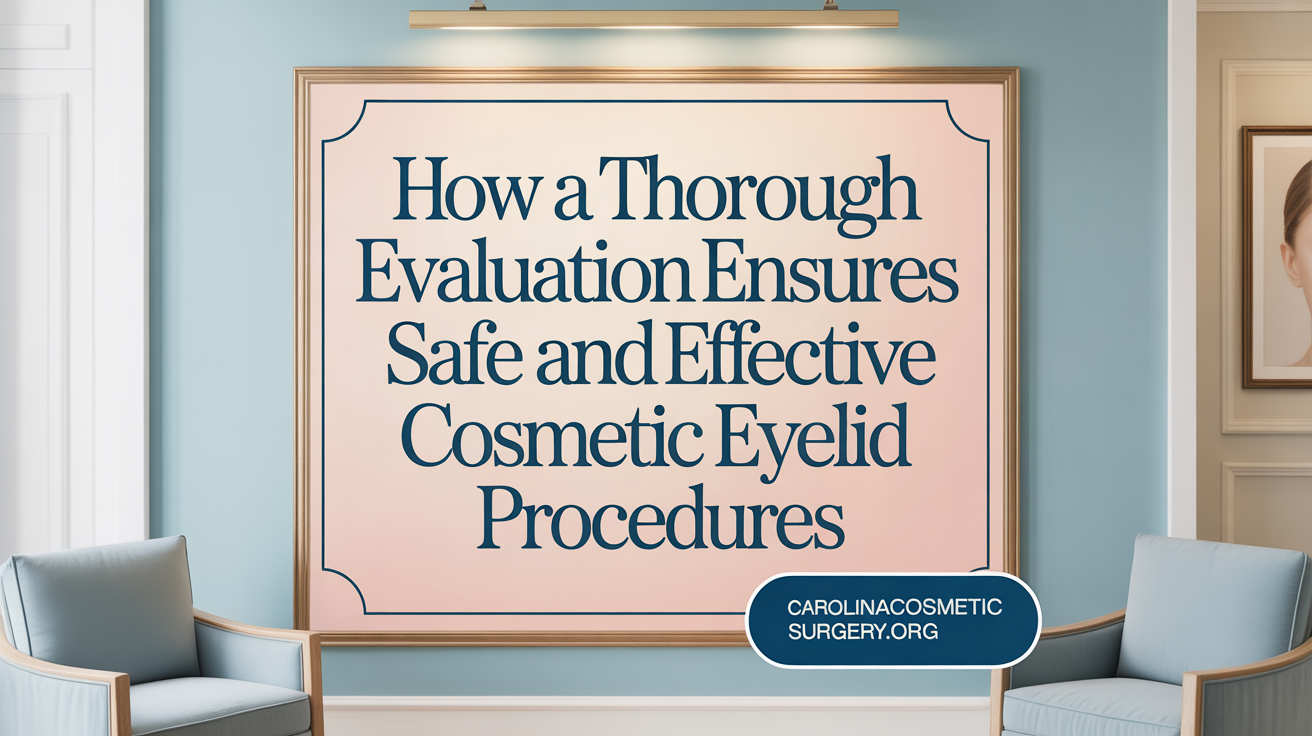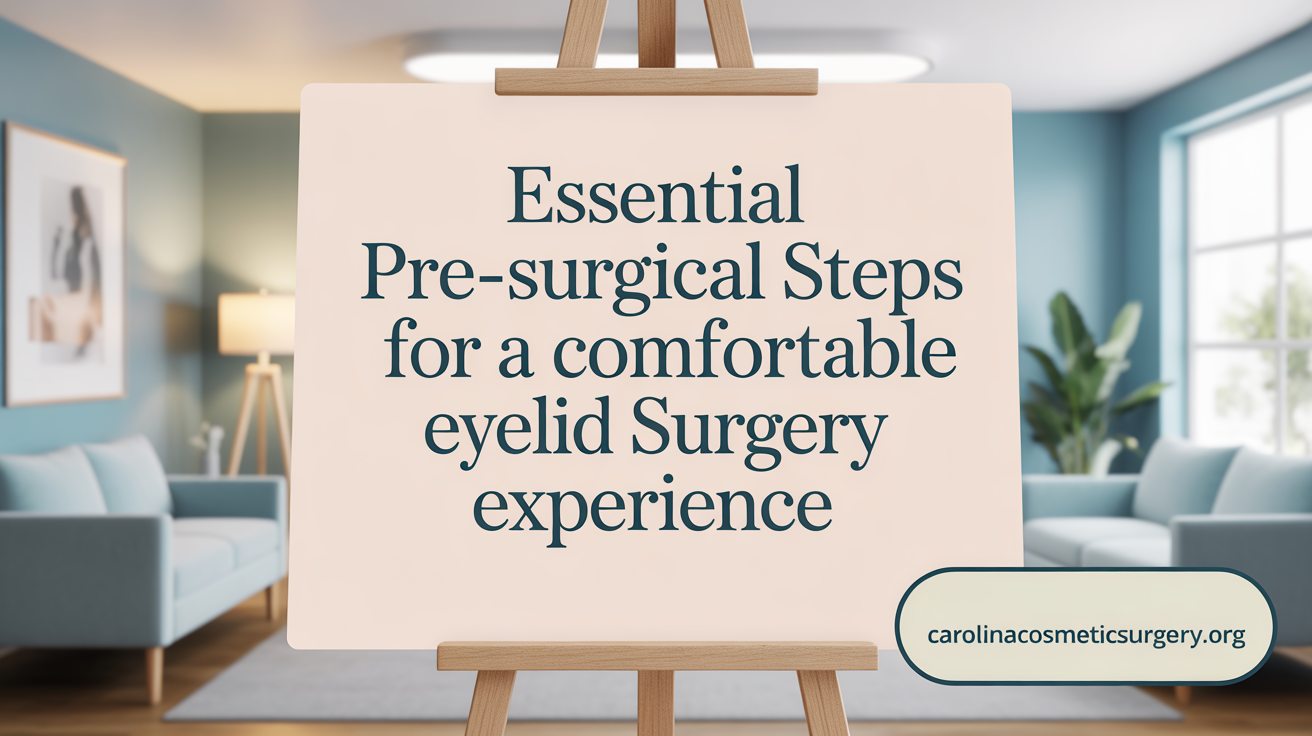Understanding Eyelid Surgery Candidacy
Eyelid surgery, or blepharoplasty, is a highly sought procedure aimed at enhancing the appearance and function of the eyelids. Success depends greatly on selecting appropriate candidates who meet specific medical, aesthetic, and lifestyle criteria. This article explores the factors that define good candidates for eyelid surgery, the evaluation process involved, common questions addressed during candidacy assessment, and important considerations before proceeding with the procedure.
Medical and Lifestyle Factors Influencing Eyelid Surgery Candidacy

What factors related to age, health, and lifestyle influence candidacy for eyelid surgery?
Candidates for eyelid surgery are generally people over the age of 30, with most being 35 or older, but younger individuals may qualify if they exhibit significant eyelid issues or have a family history of drooping eyelids. The overall health of a person plays a crucial role; candidates should be in good physical condition, free from serious medical problems such as uncontrolled diabetes, high blood pressure, autoimmune diseases, or other conditions that could complicate healing.
Specific eye conditions, like glaucoma, dry eye syndrome, or retinal detachment, often disqualify individuals unless evaluated by eye specialists. Serious medical issues, including cardiovascular disease or severe thyroid disorders like Graves' disease, can also impact suitability for surgery.
Lifestyle habits, particularly smoking, are also critical. Smoking impairs blood flow and delays healing, increasing the risk of complications. Therefore, quitting smoking at least four weeks before the procedure is strongly recommended to ensure better outcomes.
Assessment by a healthcare professional involves reviewing medical history, performing eye and vision tests, and examining eyelid anatomy. Just as age and health are considered, patients must have realistic expectations about the results, understanding that eyelid surgery improves appearance and function but does not stop the aging process.
In summary, ideal candidates are healthy, non-smoking individuals with eyelid issues such as excess skin, drooping, or fat deposits that impair vision or cause an aged look. Proper evaluation ensures that only suitable candidates proceed, minimizing risks and enhancing satisfaction post-surgery.
More information can be found searching for "age and health criteria for eyelid surgery candidacy."
Physical and Functional Indicators of a Good Eyelid Surgery Candidate

What physical features and conditions typically indicate suitability for eyelid surgery?
Candidates for eyelid surgery usually display certain physical signs that suggest they could benefit from the procedure. These include drooping or sagging eyelids that may impair vision or cause discomfort, as well as excess skin, fat deposits, or loosened muscles around the upper or lower eyelids.
Aging signs like droopy upper lids or bags under the eyes are common reasons for considering surgery. These conditions often involve relaxation of skin and muscles, accumulation of fatty tissue, or the presence of ptosis, which is drooping caused by stretched eyelid muscles.
To qualify, candidates should ideally have good skin elasticity and properly positioned eyelid margins. Severe eye diseases such as glaucoma, retinal detachment, or uncontrolled health conditions like high blood pressure or diabetes may disqualify them.
Performing a detailed evaluation, including facial anatomy and medical history, is necessary. This helps a qualified plastic surgeon determine if the candidate's physical features are suitable.
Overall, good candidates tend to be healthy, non-smokers, and possess realistic expectations about the outcomes and realistic limits of the surgery.
Comprehensive Evaluation Process for Eyelid Surgery Eligibility

What is the typical evaluation process to determine eligibility and suitability for eyelid surgery?
Assessing whether someone is a good candidate for eyelid surgery involves a detailed and systematic evaluation. It begins with a thorough review of the patient's medical history. This includes understanding any previous eye surgeries, ongoing eye conditions such as dry eye syndrome, glaucoma, or thyroid-related eye issues. Identifying these conditions is crucial, as they may influence both candidacy and surgical planning.
Next, a physical examination of the eyelids is performed. The surgeon assesses skin elasticity, the presence of excess skin or fat deposits, eyelid drooping (ptosis), and symmetry between both eyes. This helps determine the specific areas needing correction and whether the eyelid structure can tolerate surgery.
Photographic documentation of the eyelids provides a visual record before procedure and aids in surgical planning. These images also enable better communication between surgeon and patient regarding expected outcomes.
A key component of the evaluation is visual field testing. This test measures the peripheral vision to check for any visual impairment caused by drooping eyelids potentially obstructing the sight line. Significant impairment supports the functional need for surgery and can qualify patients for insurance coverage.
Further, an eye health assessment, including a slit-lamp examination, evaluates overall eye health, tear production, and checks for underlying conditions like dry eyes or retina issues. These findings help ensure no hidden problems might interfere with healing or complicate the procedure.
Finally, patients are advised on pre-surgical preparations. This includes stopping medications that may increase bleeding risk, such as blood thinners, and quitting smoking several weeks prior to surgery. Smoking cessation is especially important, as it enhances healing and reduces complication risks.
Together, these steps form a comprehensive approach, ensuring only suitable candidates proceed, and that their expectations align with realistic surgical outcomes.
Identifying Suitable Candidates Through Common Criteria and Questions

What common questions and criteria help identify good candidates for eyelid surgery?
When evaluating potential candidates for eyelid surgery, surgeons typically ask about medical history and overall health. Key questions include inquiries about eyelid concerns such as sagging, puffiness, or irritation. They assess whether the patient has realistic expectations and if eyelid issues are affecting their vision, especially in cases of drooping eyelids obstructing peripheral sight.
Criteria for suitability include the condition of the eyelids — such as excess skin, fat deposits, or drooping muscles — and the skin's elasticity. Candidates should be in good health, free from serious eye conditions like glaucoma, dry eye syndrome, or retinal issues, as well as systemic health problems like uncontrolled diabetes, high blood pressure, or heart disease.
Age is less critical than individual aesthetic concerns or functional impairments. Many candidates are over 35, but younger individuals with hereditary drooping or excess eyelid skin may also qualify.
Surgeons evaluate lifestyle factors like smoking status since smoking impairs healing and increases complication risks. They ensure patients can follow post-operative care instructions and understand the recovery process and potential risks. A person seeking to enhance appearance or correct functional issues, with a commitment to a healthy lifestyle and realistic goals, is often considered a suitable candidate.
Preoperative Considerations and Preparation Before Eyelid Surgery

What should individuals consider before deciding on eyelid surgery?
Prior to opting for eyelid surgery, it is essential to conduct a thorough evaluation of one’s medical history and overall health. Patients should inform their surgeon about all medications and supplements, especially blood thinners, hormone therapies, and herbal remedies, which may affect bleeding risks. A comprehensive preoperative assessment will examine eyelid anatomy, eyelid function, brow position, and the health of the ocular surface. Photographs are typically taken to document the eyelids' condition.
Understanding realistic outcomes is vital. Patients should discuss their expectations with the surgeon, knowing that the procedure aims to improve appearance and, in some cases, vision, but does not halt the natural aging process. Patients must also be aware of potential risks such as asymmetry, dry eye, or eyelid lag.
Preparation steps include stopping contact lens use before surgery, avoiding alcohol and intense physical activity, and adhering to postoperative instructions regarding swelling, pain, and incision care. These steps are crucial for optimal healing.
An experienced surgeon plays a significant role in the process. They will review medical history, suggest appropriate treatment options, and evaluate your candidacy carefully. A personalized plan ensures safety and the best possible results.
Who is not a good candidate for upper eyelid surgery?
Those with certain eye conditions, such as retinal detachment, glaucoma, or severe dry eye syndrome, are generally not suitable candidates for eyelid surgery. Smokers should also consider quitting well before the procedure, as smoking impairs healing and increases risks.
Candidates should be in good health overall and have realistic expectations about outcomes. Individuals with ongoing eye infections, serious medical issues, or unmanageable lifestyle habits such as smoking might be advised to delay or forego surgery.
Age alone does not determine candidacy; rather, overall health and ocular condition are more important. Full disclosure of medical history ensures surgeons can assess risks effectively and prevent complications.
Ensuring Successful Outcomes Through Careful Candidate Selection
Selecting the right candidate for eyelid surgery is crucial to achieving optimal results, both in appearance and function. Good candidates are typically healthy adults with realistic expectations, free from serious eye or systemic conditions that could complicate surgery or healing. Physical signs such as drooping eyelids or excess skin that impair vision or cause discomfort often indicate suitability. A thorough evaluation process involving medical history, physical examination, and visual assessments helps identify eligibility and individualized treatment plans. Understanding the importance of preparation and having an experienced surgeon are essential components of a successful blepharoplasty experience. Ultimately, careful candidate selection supports improved confidence, aesthetic rejuvenation, and potential functional benefits for those undergoing eyelid surgery.
References
- Blepharoplasty (Eyelid Surgery): What It Is, Details & Recovery
- Eyelid Surgery Candidates | American Society of Plastic Surgeons
- Am I a Good Candidate for Eyelid Surgery?
- How to Prepare and Qualify for Eyelid Surgery: Your Complete Guide
- Who is a Good Candidate for Blepharoplasty? Assessing Your ...
- Who is a Candidate for Eyelid Surgery? - Reeve Woods Eye Center
- Candidate Criteria For Eyelid Surgery - Niki Christopoulos, MD FACS
- Are You a Good Candidate for Eyelid Surgery?
- Who is an Ideal Candidate for Eyelid Surgery?
